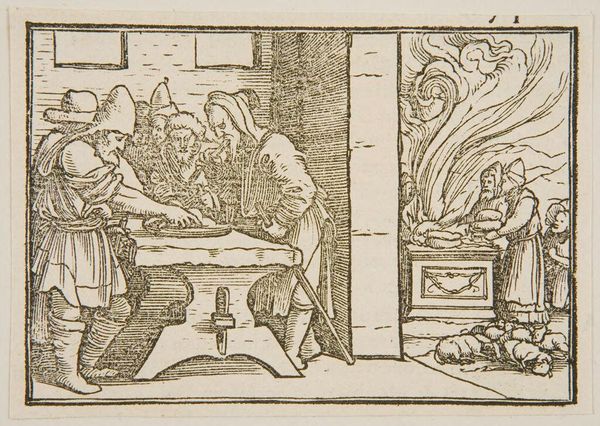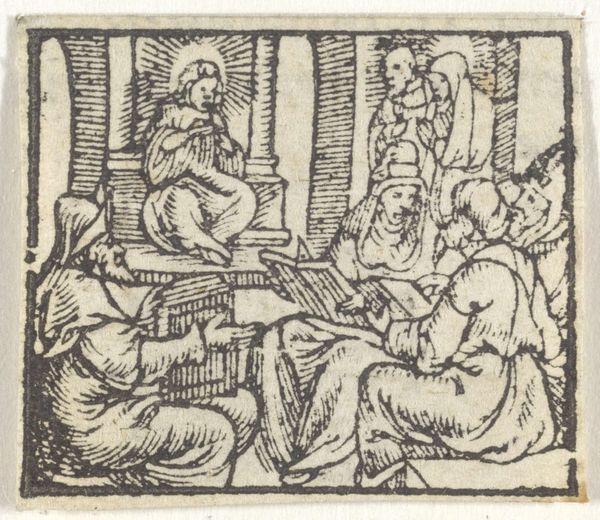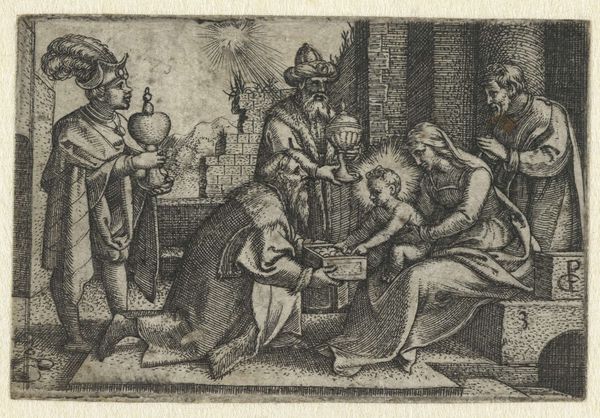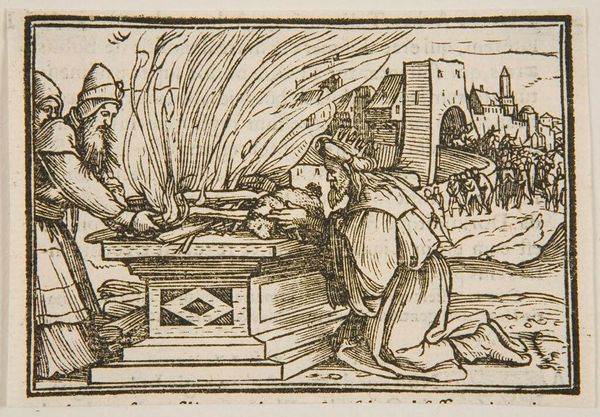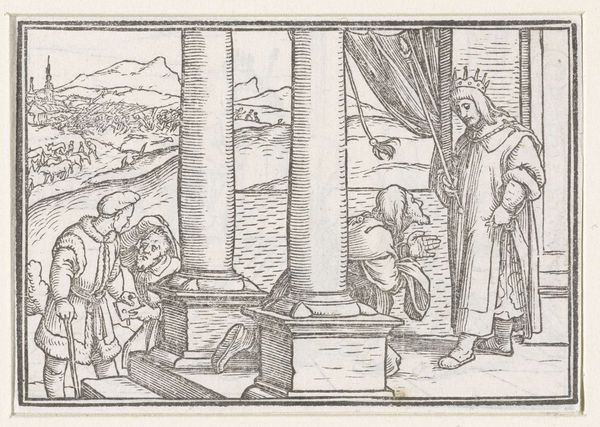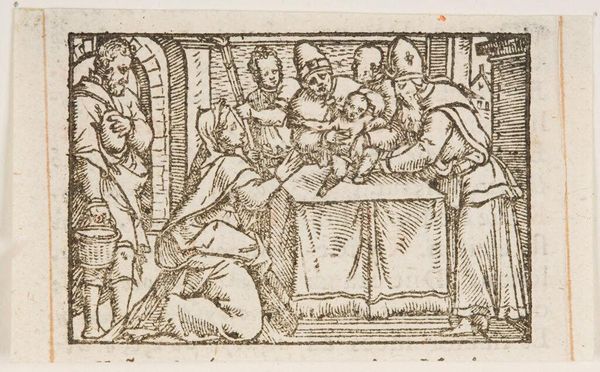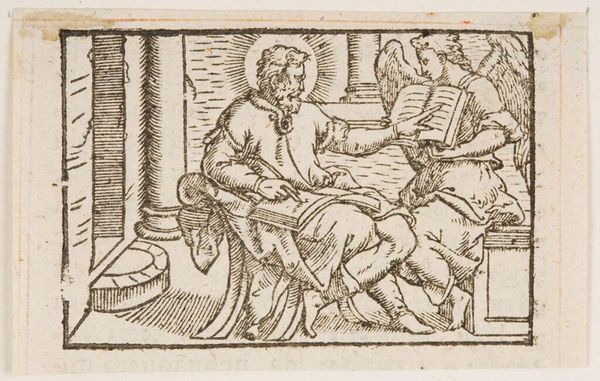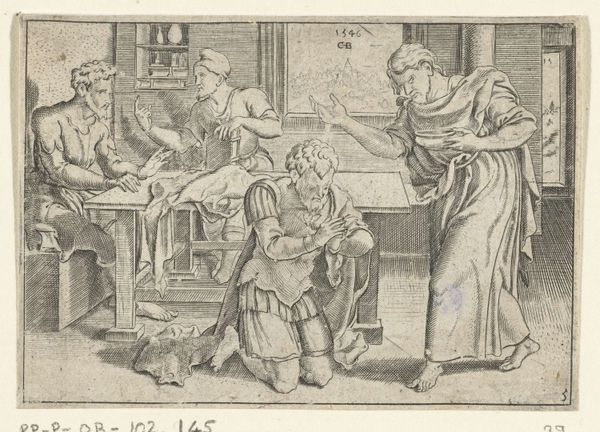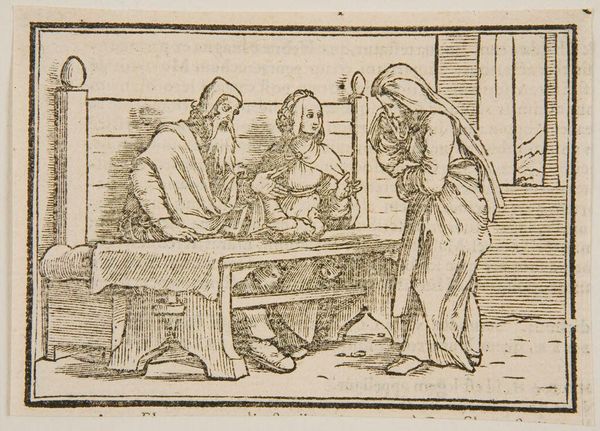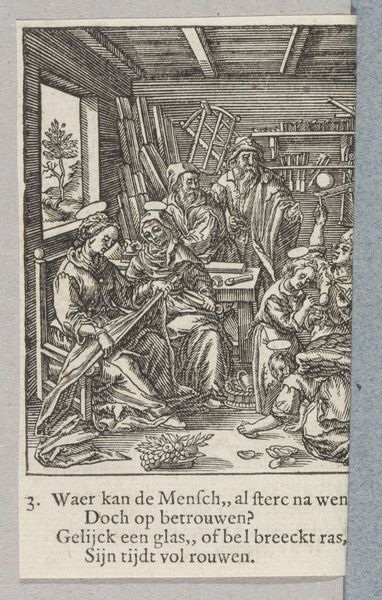
Dimensions: height 60 mm, width 85 mm, height 84 mm, width 100 mm
Copyright: Rijks Museum: Open Domain
Hans Holbein the Younger made this woodcut print, Priesters en Levieten vieren Pascha, at an unknown date. It's currently in the Rijksmuseum. The image shows priests and Levites celebrating Passover, but it was created in a Christian context and meant for a Christian audience. As such, it reflects the complex relationship between Christianity and Judaism in Reformation-era Europe. Holbein was a German artist who spent much of his career in England, and his work often engages with religious and political themes. In the 16th century, many European Christians were interested in the Hebrew Bible. The image would have been read through the lens of Christian theology, with the Passover celebration seen as a prefiguration of the Last Supper. The woodcut medium itself was widely used for the dissemination of religious and political ideas in the age of print, and prints like this would have circulated widely among literate audiences. To understand the image better, we could research the history of Christian Hebraism, the social and political context of the Reformation, and the role of print culture in shaping religious beliefs.
Comments
No comments
Be the first to comment and join the conversation on the ultimate creative platform.
